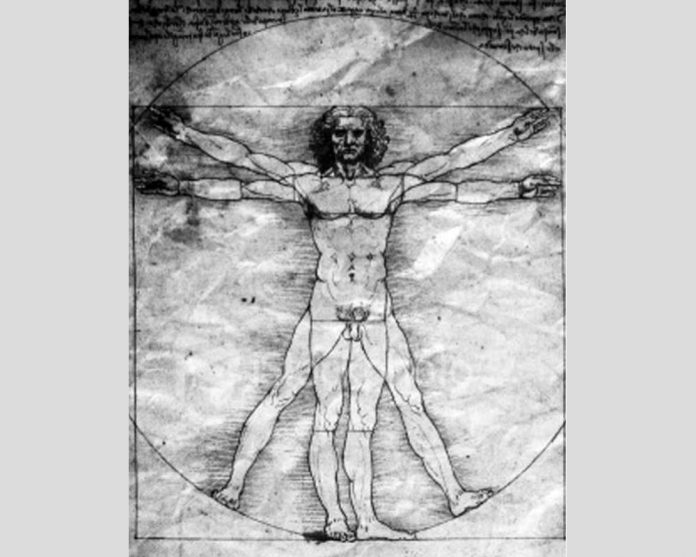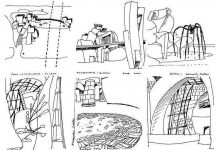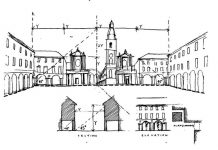The “Renaissance,” coming from the Italian word for rebirth, came about when artists turned their backs on the medieval world and sought a model for their civilization in ancient Greece and Rome. The movement began in Italy, but spread across Europe, transforming architecture as Gothic was left behind and different forms of classicism were taken up in its place.
One of the most far-reaching cultural movements of all time was the Renaissance, which began in Italy when artists, funded and encouraged by a rich class of merchants, aristocrats and guilds, made a break with the recent past and began to revive the classical artistic values of the ancient world. The result was a revolution in painting, sculpture and architecture in the rising Italian cities of the 15th century, first of all in Florence.
A new approach to the classics
There was nothing new with studying the ancient world. The literate classes—mainly the priests and monks—had read the ancient writers through the Middle Ages and they had used Latin as the language both of scholarship and of international communication. But they engaged mostly with the philosophical and theological side of the ancient writers. The change in the Renaissance was to read and value these writers and look at their art for its own sake.
In the visual arts, this meant a new naturalism of representation, together with a new “humanism”—in other words, a stress on the importance of humankind in the scheme of things. This did not mean leaving behind the values of Christianity. Far from it. But it was an acknowledgment that human beings could bring something worthwhile into the world—works of art that were dignified, harmonious, well proportioned and so on.
Organizing Vitruvius
Renaissance readers felt that the text of Vitruvius’s book was not very well organized, so most Renaissance writers took what they thought most useful from his work and tried to present it in a more coherent way. Alberti, for example, presented his work De re aedificatoria in ten books, in conscious imitation of Vitruvius. But he emphasized certain key ideas of the Roman writer to make his own theories clearer and more consistent. Alberti laid particular stress on the three key qualities that Vitruvius said a building should display: utilitas (usefulness), firmitas (strength) and venustas (beauty).
This more human-based approach was allied with advanced and eye-opening theoretical studies of subjects such as geometrical perspective and proportions. In architecture it meant a return to a version of the classical style, and a new examination of classical writings about architecture, proportions, ornament, construction and allied subjects— especially of the work of the great Roman writer Vitruvius.
Writers and printers
The Renaissance coincided with the invention of printing with movable type, and one effect of this was to make editions and translations (and “corrected versions”) of Vitruvius widely available. These added illustrations to Vitruvius’s text, making it clearer and effectively updating it, rendering it more relevant to 15th-century needs.
In addition to the translators, many artists, architects and scholars published their own ideas on architecture and building. The first to do this was Leon Battista Alberti, a great architect, writer, painter, mathematician and scholar who also wrote about painting and sculpture. Alberti’s De re aedificatoria (1452 and further editions) was arranged in ten books (as was Vitruvius’s work) and covered subjects ranging from plans and structures to ornament and, of course, the orders. It also promoted ideas such as decorum (building in a manner appropriate to a structure’s purpose) and civitas (civilization based on the city).
Orders and plans
Various key elements emerged from these editions of Vitruvius and in books such as Alberti’s. Above all, of course, the orders (see The orders) were described and illustrated to give architects a visual vocabulary for classical buildings. Because Vitruvius was a Roman writer and the Renaissance first flowered in Italy, all five Roman orders (Tuscan, Doric, Ionic, Corinthian and Composite) were shown, not just the original Greek trio.
Vitruvian proportions
The Roman writer Vitruvius had put forward the notion that the orders were related to human form—Doric was manly, Ionic was like a woman and Corinthian like a girl. Renaissance theorists took this further, relating the proportions of the human body to geometry with the “Vitruvian man.” Vitruvian man was portrayed by many artists—the version by Leonardo da Vinci (below) is the most widely reproduced and most beautifully drawn. His poses and precise proportions vary (his legs sometimes together, sometimes apart, sometimes widely splayed, for example), but whatever the exact geometry he is made to illustrate, his popularity reveals how the human form was central to Renaissance ideals and proportions.
In addition, sample buildings, reconstructed from the words of the ancients and extant ruins, were illustrated. As with the orders, architects were given a set of models and plans on which to base their own designs—converting an illustration of an ancient temple into a church, for example. Sometimes these illustrations were far from accurate. But their basis in geometry and the combination of plans and perspective views included gave architects plenty to think about and adapt to their own uses.
“… the harmony and concord of all the parts achieved in such a manner that nothing could be added or taken away or altered except for the worse.” Alberti, on beauty
Italy and beyond
This new consciousness of classicism and classical proportions transformed architecture, first of all in Italy. The first great architect of Renaissance Italy was Filippo Brunelleschi, who is most famous for designing the great dome of Florence Cathedral. His other buildings, such as the delicate Pazzi Chapel and the more monumental S. Spirito, both in Florence, are more classical. Alberti is the other great early Renaissance architect, his most famous buildings being the Tempio Malatestiano in Rimini and the cavernous church of S. Andrea, Mantua, which has a west front like a Roman triumphal arch. Buildings such as these proved an inspiration for further generations of Italian Renaissance architects in the late 15th century and beyond, and for builders from further afield as Renaissance ideas spread through Europe during the following decades.



















